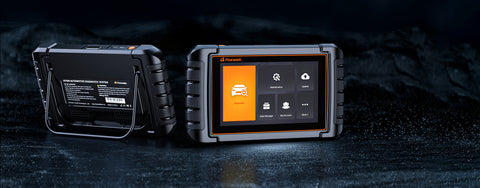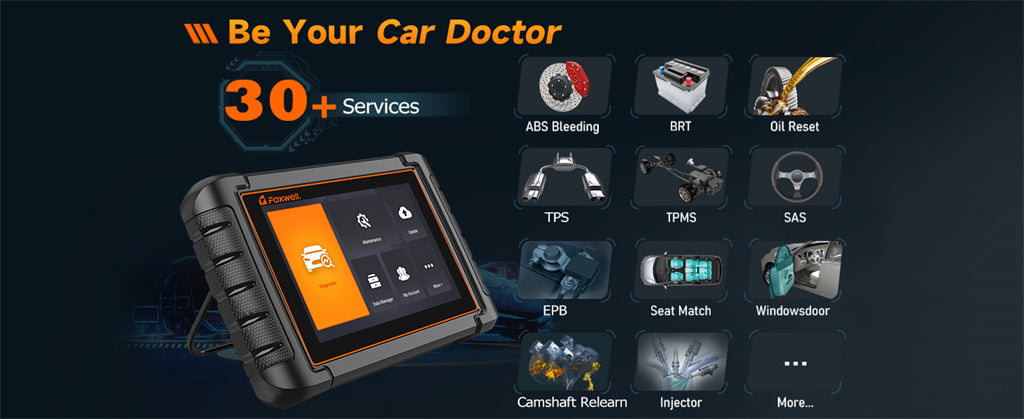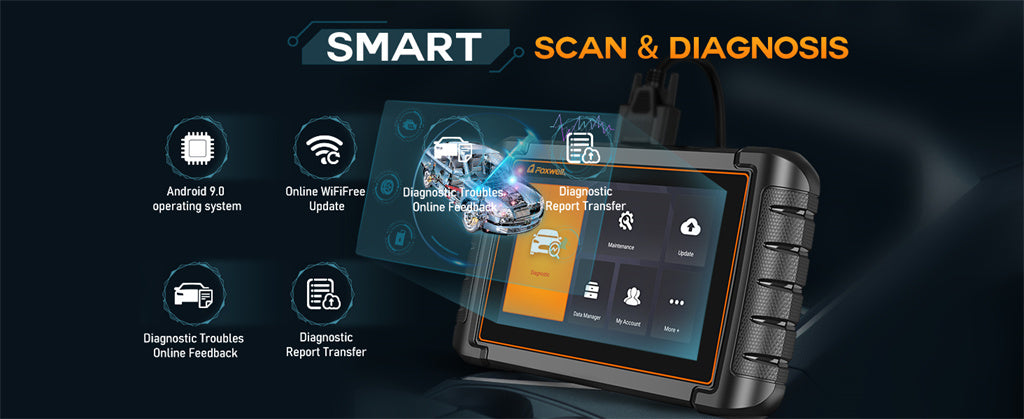Automotive experts have been working to enhance vehicle management systems ever since cars began to use electrical technology. These experts have employed electronic system-operating sensors and components. A prime example is an onboard diagnostic (OBD) scanner that can connect to your car's OBD system and display diagnostic codes that indicate the problem.
What is an OBD2 scanner?It is an essential tool in the automobile industry that offers services for repairing automotive electronic systems. However, bidirectional control is one of the most crucial aspects of an OBD2 scanner. Simply put, bidirectional control is generally referred to as the ability of a device to send and receive information between itself and another device. Here is everything you need to know about bidirectional control and its operation in an OBD2 scanner.

How does bidirectional control in an OBD car scanner work?
An electronic control unit (ECU), sometimes called a car computer, interfaces with the vehicle's memory to retrieve any malfunction data. This car diagnostic tool, the OBD scanner, can retrieve faulty information from the vehicle's memory by connecting it to the OBD port.
The OBD auto scanner analyzes all the data from memory, assisting in identifying the issue via fault codes known as Diagnostic Trouble Codes (DTC). Furthermore, because most recent car models include sensors and components connected to the ECU, any car owner can use an OBD scanner to figure out the problem with their car.
However, the capabilities of an OBD2 scanner go beyond scanning for problems. With bidirectional control, the scanner can make commands to determine specific issues that might not appear on the surface. Hence, reprogramming is another vital aspect of an OBD2 scanner.
Therefore, this will define bidirectional control and explain its usefulness and shortcomings. Bidirectional control is a two-way system that diagnoses issues and commands performance. It is not always enough to scan for the problems in a car; there are times when the driver will have to command a specific test to confirm what problem may be wrong with the vehicle that doesn't show up on a basic scan.
Different Types of Bidirectional OBD Scanners
There are two types of bidirectional OBD scanners.
- Vehicle Manufacturer scanners
- Aftermarket-produced scanners
Building and designing a scan tool can be challenging for vehicle manufacturers and aftermarket scanners. Here is a quick glimpse at the differences between the two scan tools and their respective functionalities.
Vehicle Manufacturer Scanners
Car manufacturers put a lot of effort into the production of their scanners. The car manufacturers have to consider the cost of building their scanners. However, the manufacturers do not always have the pleasure of determining what to leave out of the scanner. Therefore, the OBD2 scanner system has to interact with all possible systems within the car and make a diagnosis.
Aftermarket Scanners
On the other hand, aftermarket scanners are produced by third parties that are not the car's original manufacturers. In this instance, the aftermarket bidirectional scan tool manufacturers have to know the level of accessibility that the car manufacturer has allowed, such as enabling bidirectional control for the scan tool. However, bidirectional control can be the hardest feature to actualize. Two major reasons are safety and accountability. For instance, if the brake was off and the gearbox was in gear, it would not be advisable for a mechanic to order an increase in engine speed. This can lead to damages if care is not taken, which is why the aftermarket manufacturer has to know about the protection program put in place by the original manufacturer.
Getting Down to Basics
Bidirectional module and system testing can drastically reduce the time it takes to diagnose problems when used correctly. Suppose there is a scenario where the car refuses to start. This means that although the driver connected the fuel pressure gauge, turned the engine on, and cycled the key, no fuel pressure was recorded. The driver is then unsure if the issue stems from a command, a circuit, or a component. Nevertheless, a fuel pump command is accessible in the scan tool. Turn on the fuel pump by using the scan tool. You will know the fuel pump circuit and pump are operating correctly if the fuel pressure gauge indicates the correct fuel pressure. This is one example of how bidirectional control works in OBD2 scanners.
Using an OBD2 Scanner the Right Way
Although OBD2 scanner reviews will mention various scanners made by different manufacturers, they all have similar and easy-to-use functions despite all these scanners differing from one another. The Foxwell OBD2 scanners cover all the essential functions of an OBD2 scanner and offer more. For example, anytime an engine light or warning light illuminates a car's dashboard, you can use an OBD2 car scanner to perform a diagnostic test and identify the issue. Foxwell OBD2 scanners give the driver an in-depth analysis of the cause and possible solution to the problem.
Here's the primary method for using an OBD2 scanner:
When attaching the OBD2 auto scanner to the connector, ensure the car engine is not running.
- The scanner will begin to operate, and the driver can turn the car on without starting the engine.
- Next, the driver enters the necessary data into the scanner, including the engine type, make, model, and VIN.
- All of the data will be read by the OBD2 auto scanner and shown on the screen.
- Through bidirectional control, the driver can command certain tasks if they are unsure about a particular response from diagnosing the car.
However, drivers have to always adhere to certain fundamental guidelines to prevent receiving incorrect codes:
- The driver should review the OBD reader's user handbook to ensure proper usage.
- The driver must carefully connect to the port to avoid breaking any pins in the plug or connector.
- After attaching the scanner, the driver should always turn off the vehicle to prevent software issues.
- If a driver cannot determine a specific problem from scanning, they can command the car to carry a function through bidirectional control to test its functionality.
Choosing the Right OBD2 Scanner
There are tons of live data OBD2 scanners on the market. However, a car owner must be cautious in choosing a brand that will be compatible with their car and provide the best service.
The Foxwell OBD2 scanner model is the go-to device for car diagnostics. Foxwell OBD2 scanners have a wide range of models with unique features for different vehicles. Some of the sought-after models are:
- Foxwell NT650
Powerful beyond traditional OBD2 capabilities, the Foxwell NT650 Elite offers more than 30 maintenance services for individuals needing advanced diagnostic features, including bidirectional control. Foxwell NT650 serves as Toyota, BMW, and GM OBD2 scanners, extending to many other popular car brands. With lifetime free upgrades and compatibility with a wide range of cars from 1999 models to 2022 models, this is the perfect choice for professionals needing specific diagnostic skills.
- Foxwell NT530
The NT530 Multi-System Scanner is a unique tool that supports a car's most often-needed service and coding functions. The scanner also provides OE-level diagnosis for several auto models, which makes bidirectional control easier to carry out. Vehicle technicians and car enthusiasts can now address problems with more speed and precision thanks to changes in hardware and software.

Conclusion
The OBD2 scanner is a revolutionary device in car engineering that grants any driver the technical know-how to diagnose and remedy any issues with their car. Conversely, bidirectional control is available to make commands when testing various car parts that may not show up during a scan. Therefore, the Foxwell OBD2 scanners are the perfect car diagnostic tools to elevate the driving experience.
FAQs
How Important is Bidirectional Control in an OBD2 Scanner?
Bidirectional control allows the driver to command specific functions in the car to test for unresponsive parts to the diagnostic scan.
Why Do I Need an OBD2 Scanner?
OBD2 scanners grant you access to your car's inner workings and diagnose problems within your vehicle before taking it to an auto repair shop.
What are the Benefits of Using a Bidirectional OBD2 Scanner?
It provides deeper diagnostics, increases efficiency in troubleshooting, and can be more cost-effective.




Leave a comment
This site is protected by hCaptcha and the hCaptcha Privacy Policy and Terms of Service apply.